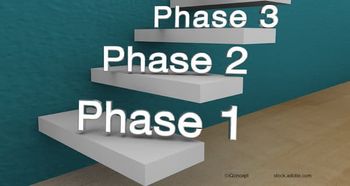
OCT innovation offering posterior and anterior capability
A new suite of optical coherence tomography (OCT) software applications for the Cirrus HD-OCT has been cleared by the U.S. Food and Drug Administration (FDA) for commercial distribution.
A new suite of optical coherence tomography (OCT) software applications for the Cirrus HD-OCT has been cleared by the U.S. Food and Drug Administration (FDA) for commercial distribution. The Cirrus HD-OCT 4.0 with Retinal Nerve Fiber Layer and Macular Normative Databases is indicated for in-vivo viewing, axial cross-sectional, and three-dimensional imaging and measurement of anterior and posterior ocular structures.
"Throughout our 15 year history of OCT innovation, we have seen its utility evolve from imaging of the retina to now offering both posterior and anterior capabilities," said Michael Kaschke, PhD, president and chief executive officer of Carl Zeiss Meditec. "The Cirrus HD-OCT 4.0 incorporates the latest applications to provide eye care professionals with the tools and analyses needed to manage complex eye conditions throughout a patient's lifetime."
The Cirrus HD-OCT Version 4.0 offers three tools for quantified glaucoma assessment and management:
RNFL Normative Database helps to identify retinal nerve fiber layer (RNFL) loss.
Anterior Segment Imaging provides visualization of the angle and measurement of central corneal thickness.
Guided Progression Analysis (GPA) software supports glaucoma treatment decision-making by identifying statistically significant changes in RNFL thickness.
"The GPA and anterior segment imaging capabilities give me increased confidence in determining whether or not my glaucoma patients are responding adequately to therapy or if they require further intervention," said Ike K. Ahmed, MD, FRCSC, Assistant Professor at the University of Toronto.
Cirrus HD-OCT RNFL measurements have set a new standard in reproducibility. According to a recent study in British Journal of Ophthalmology, reproducibility of Cirrus HD-OCT RNFL thickness measurements is within a standard deviation of 1.2 µm for glaucomatous patients.1
There are also new enhancements to help clinicians better manage retinal diseases and monitor patient response to therapy:
Macular Change Analysis helps physicians evaluate retinal status and response to therapy by mapping changes in macular thickness.
Fovea Finder automatically identifies the center of the fovea to ensure the accuracy of macular thickness measurements.
Macular Thickness Normative Data allows physicians to identify retina disease based on comparison to age-matched data.
Reference1. G. Vizzeri et al, Agreement between Spectral-Domain and Time-Domain OCT for measuring RNFL thickness. British Journal of Ophthalmology 2009. 93,775-781.
Newsletter
Get the essential updates shaping the future of pharma manufacturing and compliance—subscribe today to Pharmaceutical Technology and never miss a breakthrough.












































